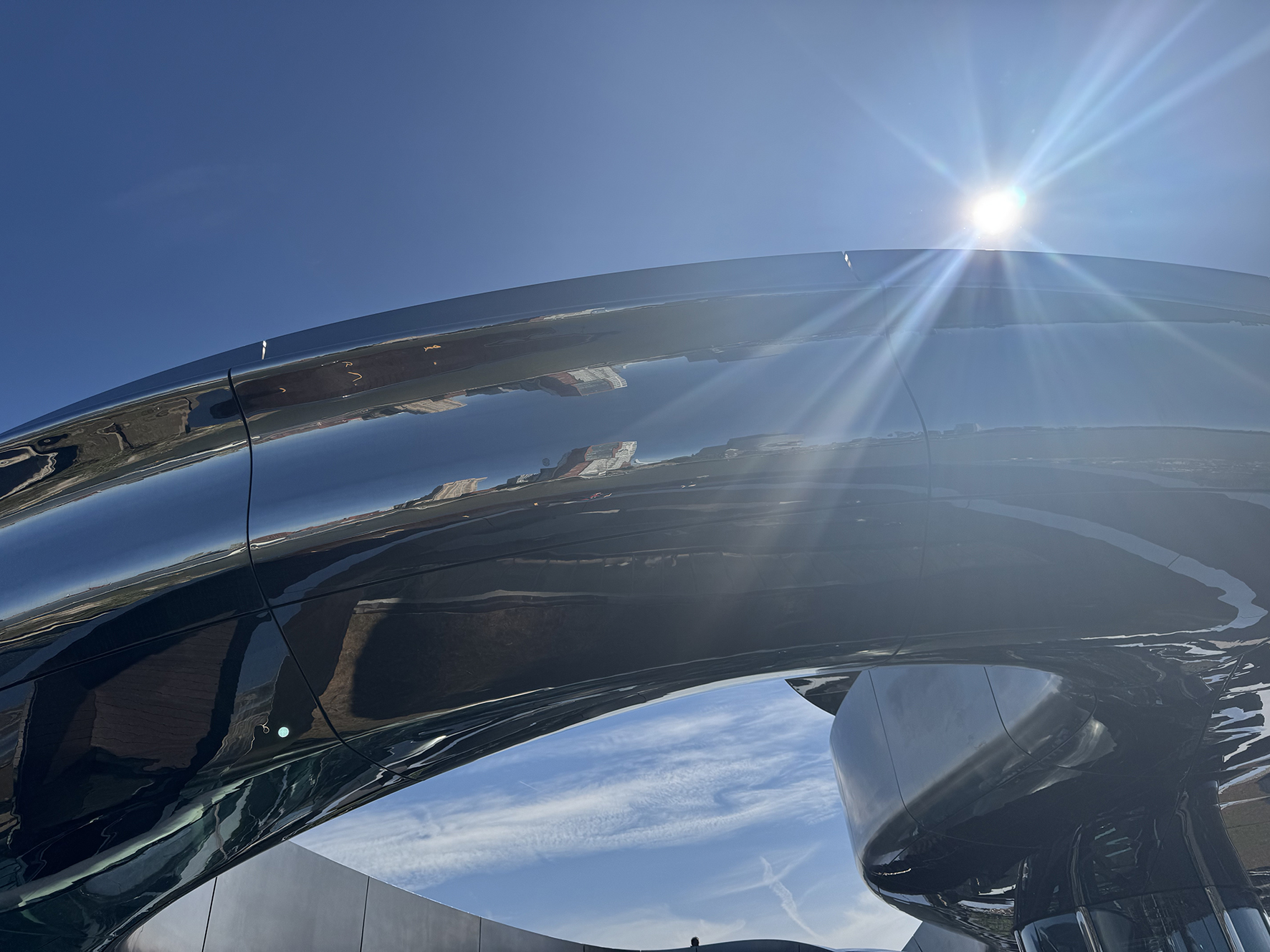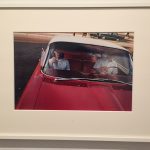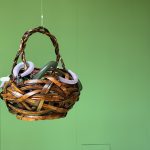At the edge of the river, in a former harbour warehouse where ships once set off, Rotterdam’s new FENIX museum opens with a powerful theme: migration. Located on the Katendrecht peninsula, directly opposite the historic Hotel New York, the site marked the beginning of countless journeys. Built in 1923 as the San Francisco Warehouse for the Holland-America Line, it was once the largest harbour warehouse in the world. This immense industrial building later served as a hub for storage and food distribution. After nearly a hundred years of transformation, it now re-emerges as a museum. A true phoenix.
Inside the museum, migration unfolds through contemporary art, personal testimonies, and sensory installations. With its high ceilings and monumental volumes, this building gives space for the works to breathe. These environments are designed to welcome large audiences while maintaining an intimate feel—essential for a topic that touches so many. The decision to devote an entire museum to migration feels both timely and essential—a cultural and civic gesture that reflects Rotterdam’s identity as a port of arrival and departure.
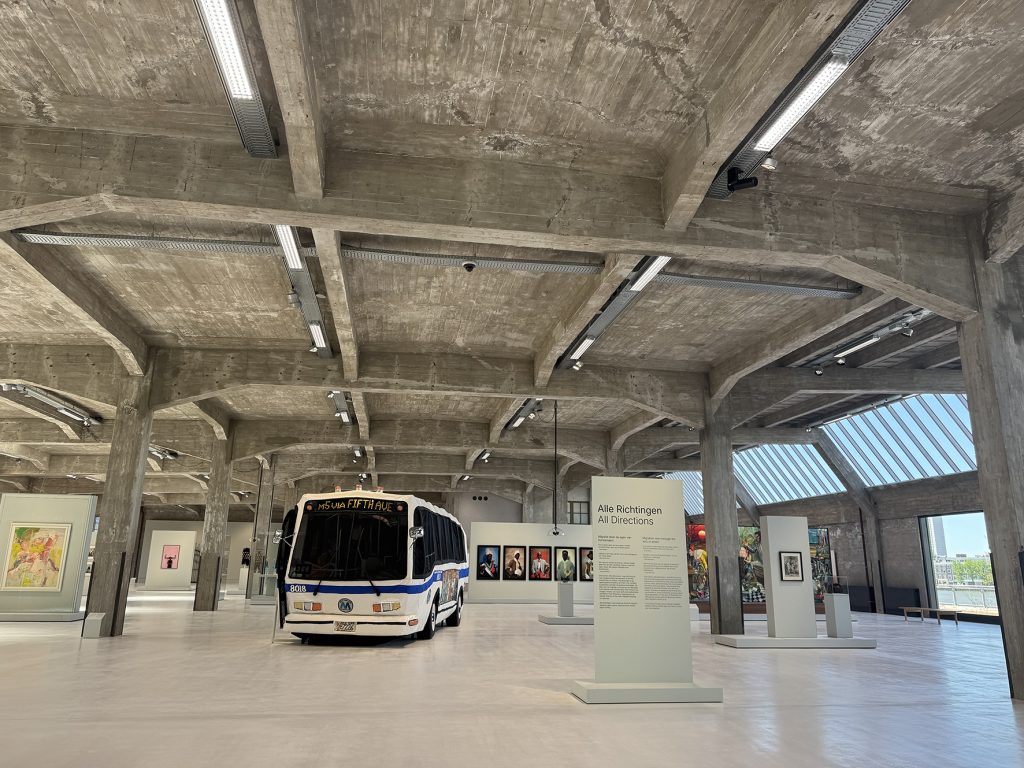
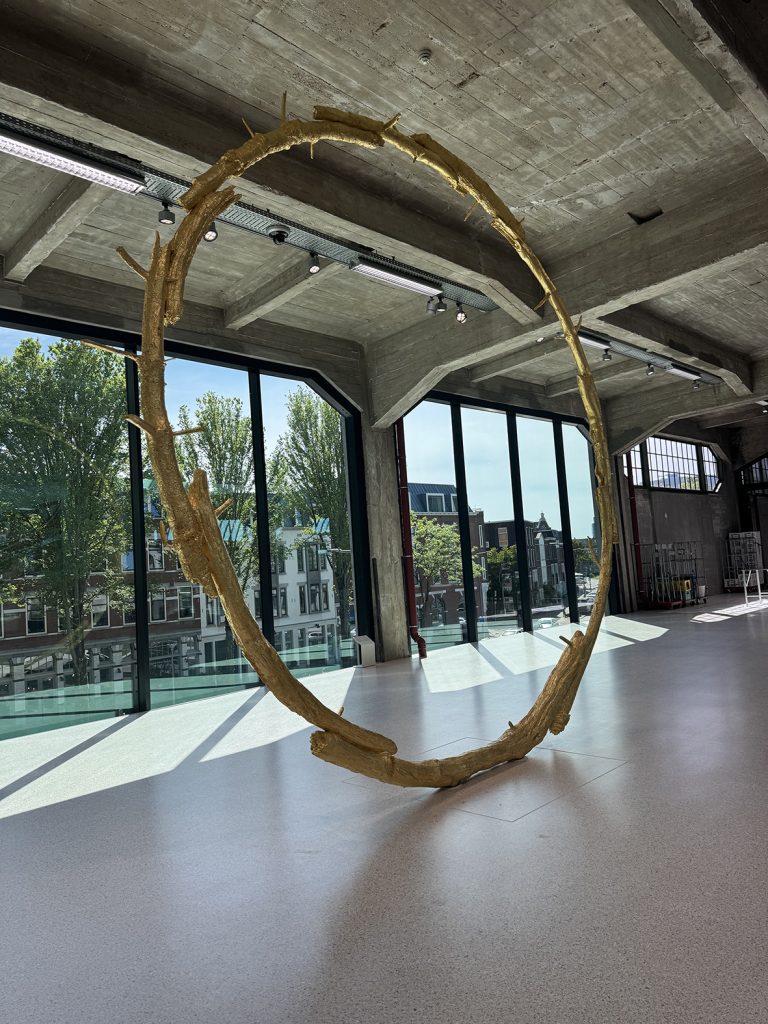
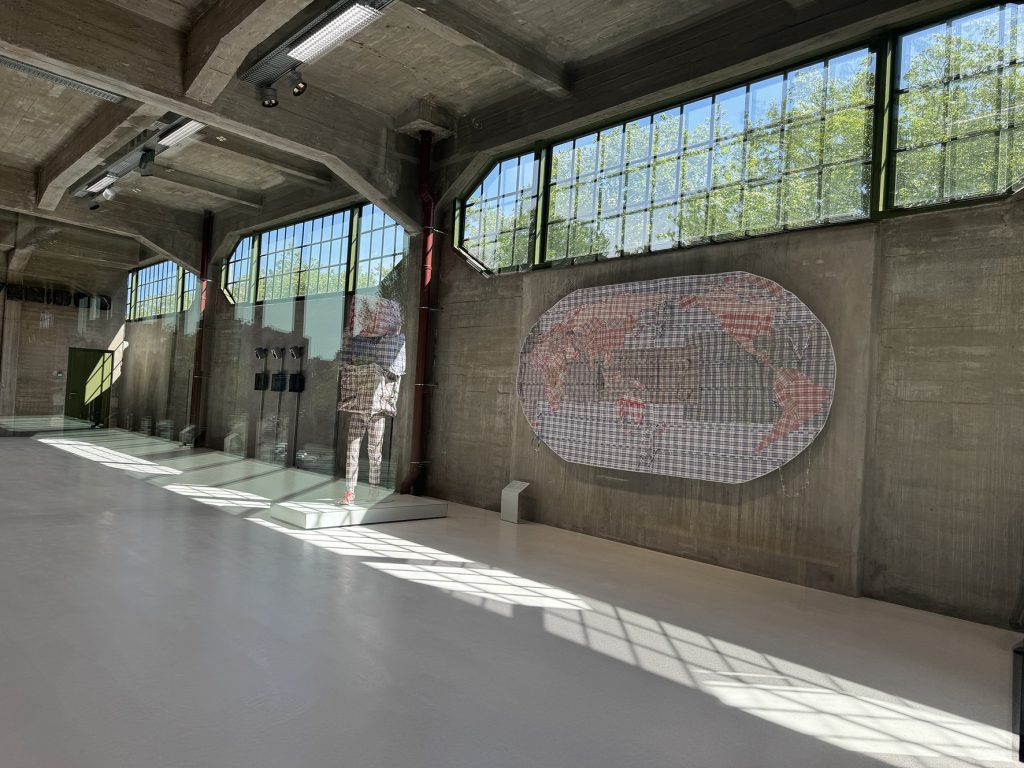
Red Grooms – The Bus, Ugo Rondinone – The Sun, Dan Halter – Patterns of Migration, 2015 Rifugiato Mappa del Mondo (China).
Works by Rineke Dijkstra, Red Grooms and a wide range of international artists trace geographies of movement and memory. One piece in particular is my favourite for now: The Sun (2018) by Ugo Rondinone. Monumental in scale and presence, the sculpture is made from real tree branches cast in bronze and gilded by hand. Rondinone draws from German Romanticism and the work of Caspar David Friedrich, transforming natural materials into a conversation starter. The sun, the world’s oldest timekeeper, is for all of us, wherever we are.
For people who migrate, it marks a decision that’s enormous — and often life-changing. One made without knowing if the future will turn out anything like the dream. Whether fleeing or exploring, the choice to move reshapes everything. Seeing migration through visual art brings that weight into FENIX. Not just as storytelling, but as something felt. This is where empathy begins. It’s humanity and compassion made visible.
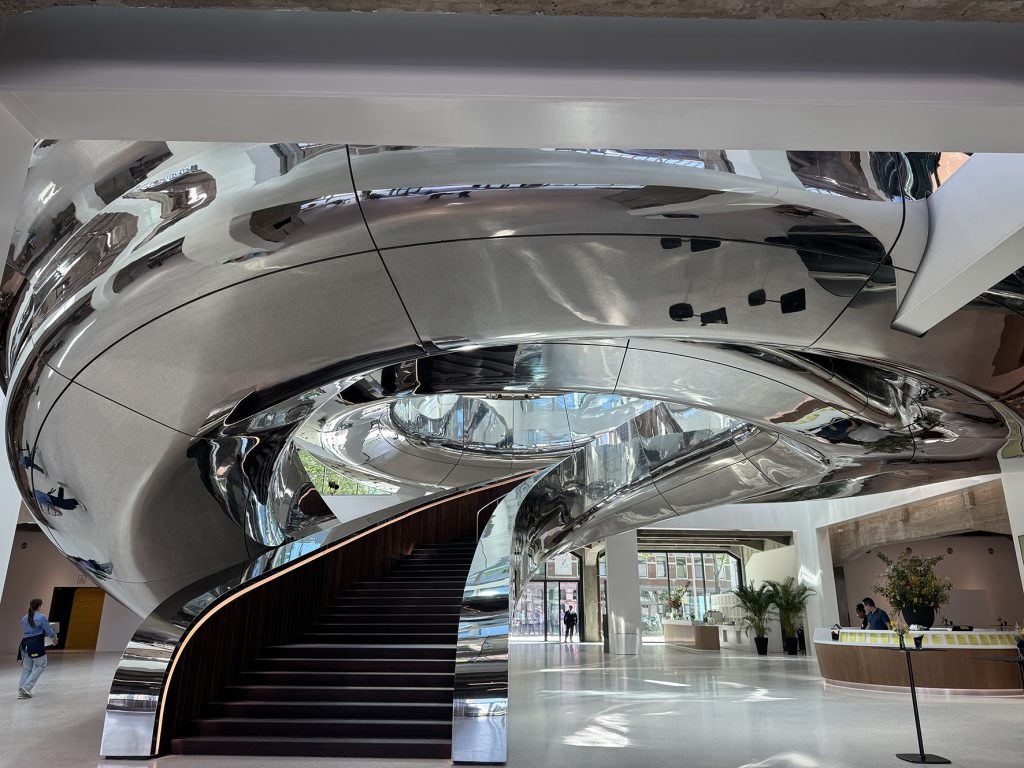
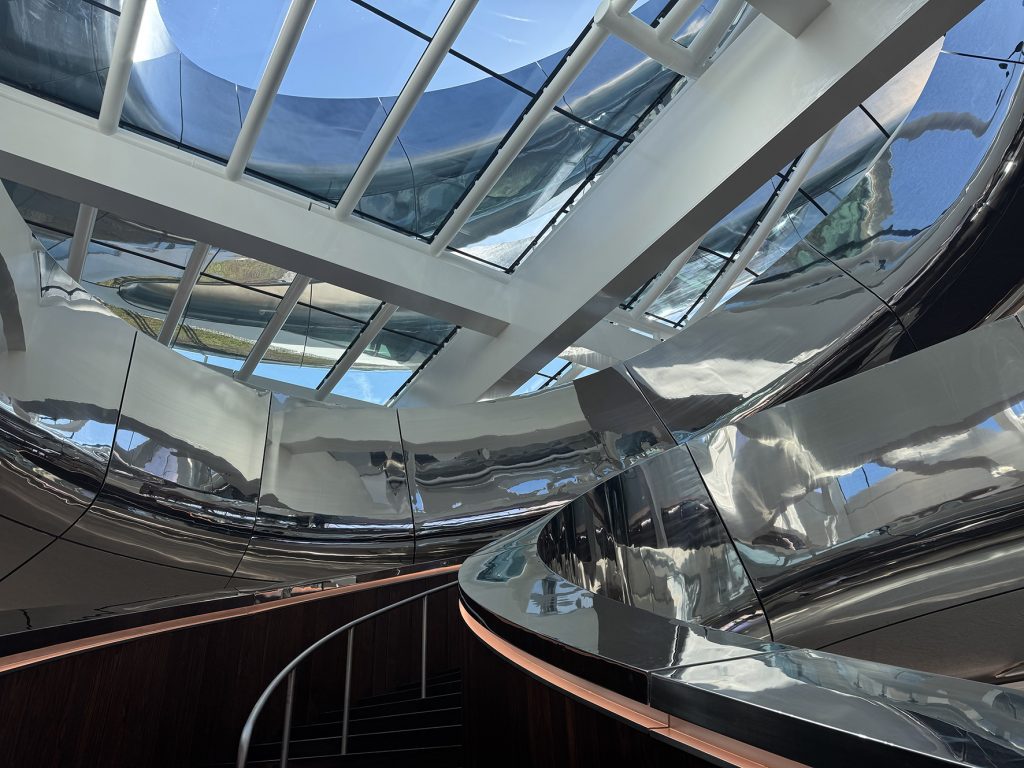
Ma Yansong – The Tornado, FENIX
The architecture, too, is a tour de force. From a distance, the design appears like a silver cloud suspended in the Rotterdam skyline. At the heart of this museum is the Tornado: a double-helix staircase that spirals towards the rooftop viewing deck, designed by Beijing-born architect Ma Yansong of MAD Architects. The name Tornado refers to its swirling, dynamic form—evoking motion, disruption and transformation. Conceived as both a sculptural gesture and a visitor experience, the Tornado mirrors the themes that echo throughout the museum: movement, transition, and personal choice. Mirrored steel panels, multiple ways upward, and even a beautifully designed lift all contribute to the sense of layered exploration.
Ma Yansong, founder of MAD Architects, once worked alongside the late Dame Zaha Hadid. They share a sculptural language. His design philosophy is rooted in Shanshui — a classical Chinese approach that blends landscape, emotion and architecture. Inspired by traditional mountain-water paintings, Shanshui seeks harmony between the natural world and the built environment. The Tornado evokes this influence and is uniquely grounded in the emotional and historical narrative of FENIX. Ma favours organic form and architecture shaped by feeling rather than rigid function. As the first Chinese architect commissioned to design a museum in Europe, his approach bridges Rotterdam’s layered past with a forward-looking vision. From the top of the Tornado, you take in a 360-degree view over the city — across the Euromast, Hotel New York, the Erasmus Bridge and the metropolitan skyline. On top of the world, so spacious overlooking the very docks where millions once embarked or arrived.

Rotterdam skyline
FENIX is a gem. A place for remembrance and dialogue through art, filled with layered stories and subtle traces of past and present. Its surroundings are just as lively: the neighbourhood hosts creative ateliers, international cuisine, and Granucci Gelato, just next to the museum, for a treat.
Images taken by author. Courtesy of FENIX Museum and all listed artists.
Discover more: www.fenix.nl
